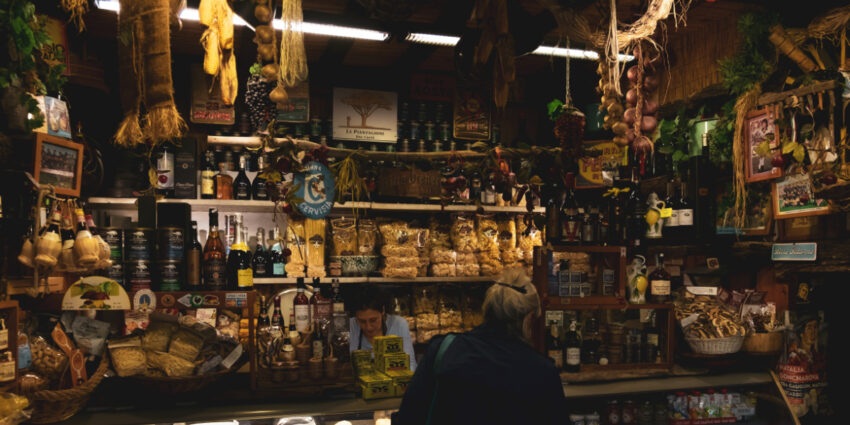4 Uncommon Italian Foods You’ve Never Heard Of

Italy is world famous for its gastronomy and that’s a fact. We aren’t the first ones to touch on this topic and most definitely won’t be the last. Italian food is so beloved for a simple reason, it’s delicious! How many people truly know the uncommon Italian food that makes up Italy’s iconic gastronomy? Uncommon as in they are not the two famous P’s: pizza or pasta.
Outside of the pizza and pasta realm exists an entirely different type of Italian food that some may even consider odd, but true foodies will delight at the opportunity to experience Italian cuisine at its core. Read on to learn about four uncommon Italian foods, you’ve most likely never heard of!
Trippa
Trippa, a popular dish across Italy, is the edible stomach lining of farm animals such as cattle, pigs, and sheep. How did Italians come to love this unique protein? Hardship in Italy’s past forced Italians to be creative in cooking and not waste parts of the animal. Due to its affordability factor during times of economic trouble, tripe is prevalent in many Italian regions, and each area has its spin on the mineral-rich protein. It’s not all that uncommon and is eaten in many cultures, from the Philippines to Poland. Tripe is rich in protein, low in calories, and mild in flavour – making it one of the more accessible adventurous foods on the list! As this is an Italian staple, many regions have their spin on Trippa. In Florence, order the Trippa Alla Fiorentina, tripe simmered in mouth-watering tomato sauce and topped with grated Parmigiano-Reggiano. Seconds anyone? On the other hand, if you’re in Milan, order the Busacca, which is tripe stewed with beans, making it the ultimate comfort food for a cold winter Milan day.
Pani Câ Meusa
Similar to the other Italian foods mentioned previously, the famous Sicilian spleen sandwich was born out of necessity and economic scarcity. Many centuries ago, Jews arrived in Sicily and understandably didn’t want to waste the animal remains that were typically thrown away. Waste not, they said – and the Pani Ca Meusa was born. Pani Ca Meusa is made by boiling cow spleen, lung, and trachea before frying it in lard. It is then served on a bun and can either be eaten “married style” with ricotta and caciocavallo cheese or “single” style with a touch of fresh lemon juice. Pani Ca Meusa is a Sicilian sense of pride, so it’s no surprise that you will find many street vendors selling this Sicilian staple amongst the streets of Palermo. Check out the popular spots, Nino’ u Ballerino or Porta Carbone. Luckily for squeamish eaters that can’t stomach eating spleen, there are other Sicilian delights to be tried, such as arancino, stuffed & fried rice balls, or sfincione, Sicilian pizza.
Florentine Lampredotto
What was originally known as peasant food is now a Florentine specialty. Florentine Lampredotto dates back to the 15th century when the Florentine people could only afford leftover cuts of meat. As any savvy Italian would, they made a beloved sandwich out of a cow’s stomach, specifically a cow’s fourth stomach. The cow stomach is cooked in vegetable broth, seasoned with herbs, and then cut up and served on a crusty white bread roll. When in Florence, do as the locals do and top it off with salsa verde, a typical green sauce. Peruse the charming city to check out which street vendors have the largest group of locals, which is always a promising sign. A no-fail option is Da’ Vinattieri, right around the corner from the National Museum of Bargello, in the heart of Florence’s centre. Too timid to try lampredotto? No worries! A good bet is to order the comfort food Ribollita, a Tuscan bread soup made by maximising vegetable leftovers with cannellini beans.
Ventricina Teramana – The Nutella of the Poor
“Non si butta via niente” Nothing goes wasted, is a popular saying by our grandparents when referring to pigs in a region like Abruzzi, where many abandoned the country and migrated to the U.S., Argentina, Australia, and other parts of the world to find better opportunities. Pig slaughtering was and still is an ancient tradition, and as the elders say, Nothing from the pig gets wasted. The skin is used for soups, and the leftover fat is used to make soap (yes, we’ll write a dedicated article on that) and Ventricina. A spreadable paste made out of the fat from 60/70% dried red pepper, rosemary, garlic, and salt. It is packaged and hung in natural casings such as bladder or pig stomach, although it is now sold in glass jars. It is not uncommon to find Nutella jars reused and filled with Ventricina.
Hungry for more? You can count on us for a personalised tour of Italy for all of your wild (or more tame!) foodie adventures.